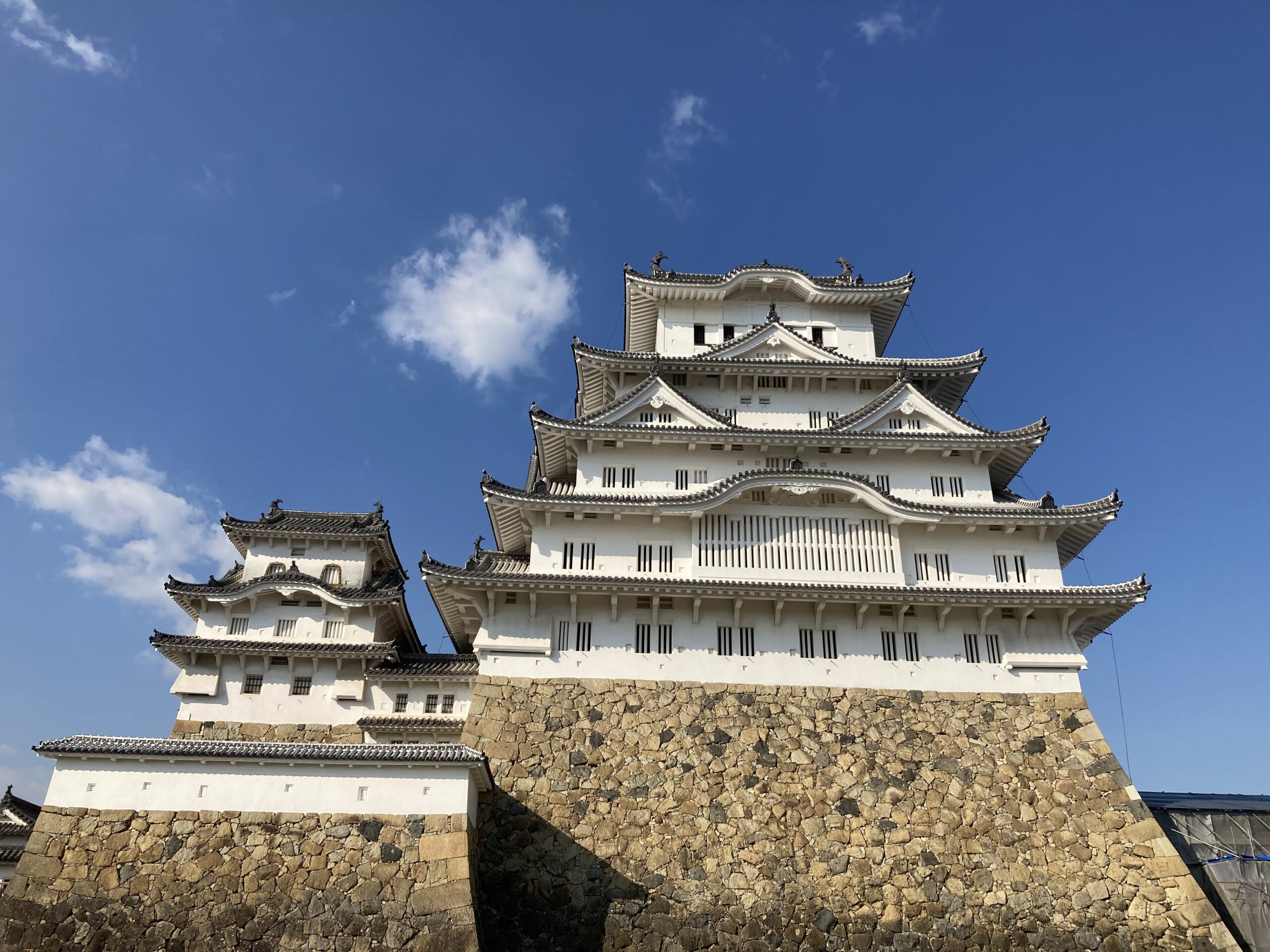1. Welcome to a virtual (imaginary) tour led by a local!
Since this is quite a long tour, we highly recommend that you join only the parts that interest you when you’re looking for a change of pace. Hopefully, this won’t turn into a long and wrong tour!❤
This blog dives into the fascinating world of Japanese castles, preserving the essence of the Warring States period. Unlike official sites that offer detailed and sophisticated explanations, this blog takes a more casual approach, guiding you through a virtual (imaginary) tour with a local perspective.
We’ll tackle common questions that often come up during castle visits, presenting each exhibit in an easy-to-follow and engaging manner.
👉 Note: If you’re looking for in-depth and detailed explanations, please refer to official websites or travel agency pages.
For foreign visitors, business guests, and students exploring Japan, we invite you to experience these stories firsthand. Come and discover the charm of Japanese castles—we’ll be waiting for you!
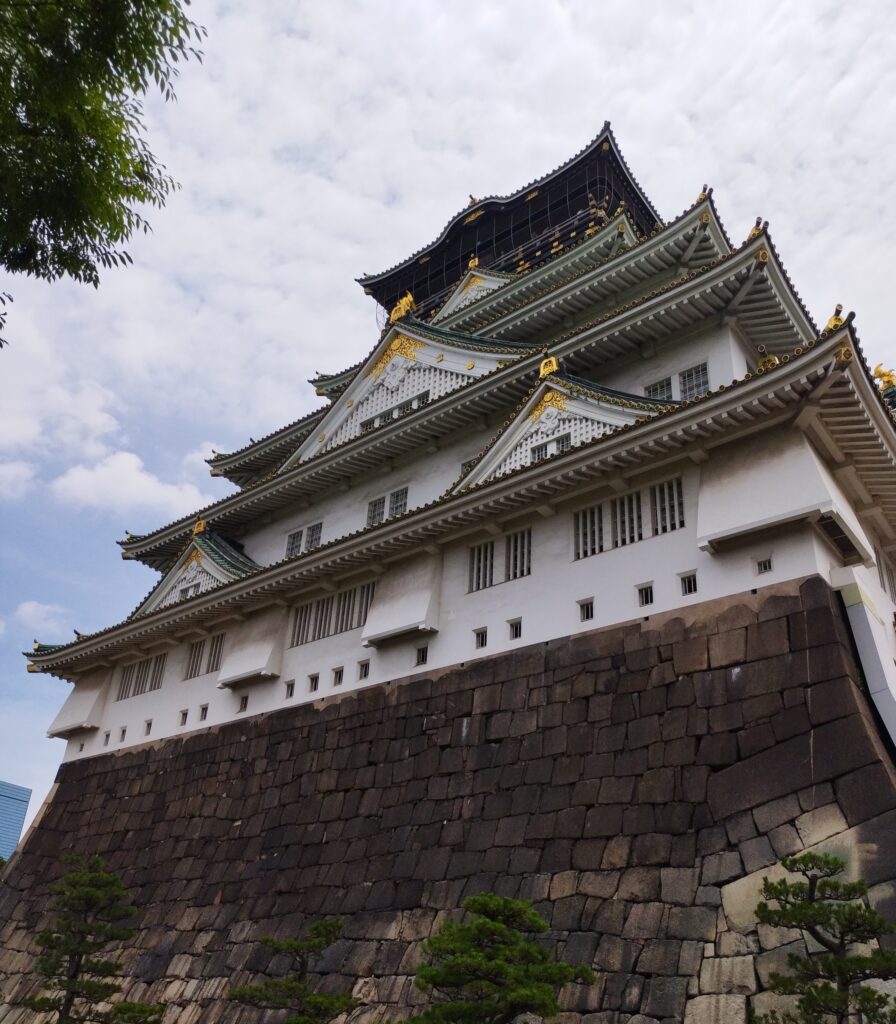
2. Quick Overview: Japanese Castles
2.1 Basic Information
Let’s start with a brief overview to give you the full picture of Japanese castles.
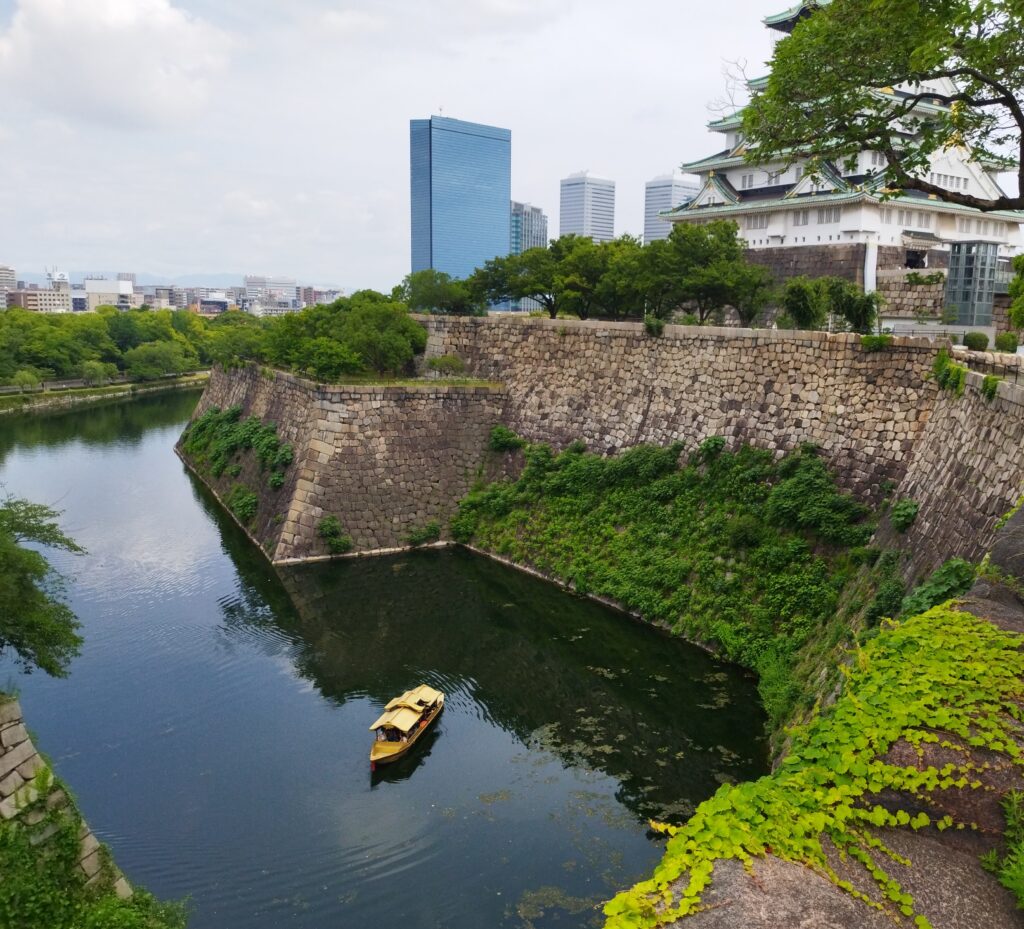
- Since ancient times, Japan has had primitive fortifications known as forts, built to protect controlled territories.
- Many of the castles that remain today were developed significantly during the Warring States period, approximately 400 to 500 years ago.
- Initially, castles were primarily mountain fortresses built on elevated land for surveillance and defense, with military functionality taking precedence.
- As the era of war came to an end, most castles transitioned into political, economic, and cultural centers.
- Their locations shifted from mountains to hills and flatlands, leading to the development of large-scale structures such as stone walls and castle towers.
- At its peak, Japan had nearly 300 castles across the country, with each feudal lord incorporating unique designs to showcase their authority.
- During the Samurai-led Shogunate period, which lasted about 260 years, castle-centered towns flourished, laying the foundation for modern Japanese lifestyles and culture.
- With the decline of the samurai era, castles lost their purpose, and many were either demolished or left to fall into ruin.
- Fortunately, 12 castles have been preserved, including Himeji Castle, which is recognized as a UNESCO World Heritage Site.
- Many castles have been restored for tourism, featuring exhibits that allow visitors to appreciate the power, craftsmanship, and daily life of the time.
2.2 Q&A 👀 Perspectives from Foreign Visitors.
This virtual tour blog answers common questions visitors might have. We’ve selected 10 frequently asked questions from foreign visitors to Japanese castles.
We hope you enjoy these Q&A sessions, presented with audio featuring a female US voice and a male US voice.
- Where can Japanese castles be found?
- They can be spotted almost anywhere, from major cities to rural areas.
- When were Japanese castles built?
- Primitive forts existed since ancient times, but most large castles were constructed around 400 to 500 years ago during the Warring States period.
- Does anyone still live in Japanese castles today?
- Generally, no one resides in castles nowadays. Most have been converted into parks or museums open to the public.
- How many castles are there in Japan?
- Including castle ruins, reconstructions, and restored sites, there are hundreds spread across the country.
- What is the inside of a castle like?
- Many retain their original wooden interiors, featuring steep staircases leading to the top floors.
- Are Japanese castles different from one another?
- Yes! Each region’s feudal lords incorporated unique architectural styles, so every castle offers something new to discover.
- What makes Japanese castles interesting?
- They showcase Japan’s traditional aesthetics, exceptional craftsmanship, and breathtaking views from their towers.
- Why have some historic castles survived?
- Some were repurposed as military bases, while others were preserved through the dedication of local communities.
- How do Japanese castles differ from Western castles?
- Japanese castles are mainly constructed from wood and stone, with layered wooden structures (tenshu) built atop stone walls.
- When is the best time to visit Japanese castles?
- Spring, when cherry blossoms are in full bloom, and autumn, when the foliage turns vibrant red, are particularly recommended.
2.3 Ready to Crack a Smile? Short Stories for You!
Here are some short stories answering common questions from foreign visitors who are curious about Japanese culture and local life. I hope you enjoy them!
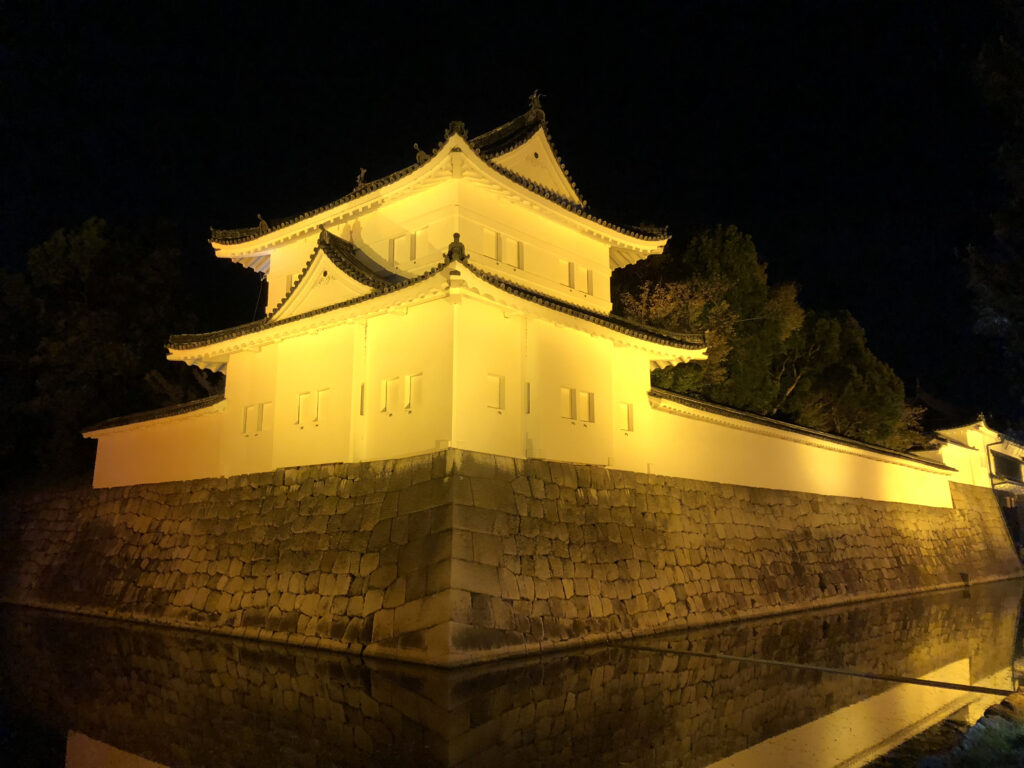
Q1: What makes Japanese castles fascinating?
- First, their towering presence is truly awe-inspiring when you look up at them.
- Then, there’s the natural curiosity about what lies inside—how were they structured, and what secrets do they hold?
- Stepping inside, you can imagine how people lived centuries ago, which adds to their allure.
- Their unique architectural style, deeply influenced by traditional Japanese aesthetics and the advanced craftsmanship of the time, is a must-see.
- The panoramic view from the castle keep is breathtaking, shifting in mood depending on the time of day and season.
- But as with anything enjoyable, there’s a price to pay!
- Most castles are built on elevated land, so getting there is like a mini hiking expedition.
- Once inside, you’ll encounter narrow, steep wooden staircases that make ascending and descending feel like mountain climbing.
- Due to overtourism, long queues inside castles have become common.
- Additionally, many castles showcase historical artifacts like weapons, armor, and everyday tools, which naturally slow down visitor flow.
- Unfortunately, when you’re stuck in a long line, you might suddenly feel the urge to find a restroom.
- Of course, samurai-era castles weren’t exactly equipped with modern plumbing!
- But—perhaps, just maybe—some defensive structures could offer a creative solution.
- It turns out that samurai used a particular defensive feature during battle: “stone-dropping” openings, originally meant for hurling rocks at enemies scaling the castle walls.
- And what was the cheapest, most readily available substitute for a rock?
- Yes, you guessed it—the very thing you’re desperately holding in right now!
- Visiting a Japanese castle might just offer you a hands-on experience of history in ways you never imagined!

3.Castle Tower: The Iconic Heart of Japanese Castles
Here are some fascinating insights into the castle tower—the literal star of Japanese castles!
3.1 Basic Information
- It is said that there were originally 20,000 to 50,000 buildings for defense, so-called “castle” in Japan.
- Although their scale and form varied, it is said that there were around 100 castles with a castle tower.
- Old castles for defense since ancient times were transformed into military facilities adding a castle keep during the Civil War period.
- The castle keep, as you can see, refers to the tallest watchtower within the castle.
- What sets it apart from other watchtowers is that it also served to demonstrate the lord’s authority and power.
- Due to its height and isolated position, there was no escape, and it was designed with the assumption of a final siege, a last stand.
- Therefore, the lords usually did not live in a castle tower.
- A separate residence called “Goten,” a mansion was constructed within the castle and the lords lived their daily lives and conducted politics there.
- There are currently only 12 surviving castle keeps in the country.
- Most remaining castle towers have been reconstructed based on historical records or rebuilt for tourism purposes.
3.2 Q&A 👀 Perspectives from Foreign Visitors.
Looking up at a castle tower often sparks curiosity! Here’s a list of common questions visitors tend to ask. Of course, individual perspectives vary depending on their interest in and knowledge of Japan and its architecture, but these are frequently asked questions.

- Why was such a tall tower built?
- It was to expand the field of vision for surveillance purposes and intimidate enemies, as well as to demonstrate authority within the castle town.
- Is it entirely made of wood? Does it have any special structures?
- Instead of using metal materials like nails that rust, the parts are interconnected like a puzzle and stacked by combining each piece.
- How is this height achieved with wood?
- Pillars and beams are made of strong woods such as Japanese cypress, cedar, and pine, and a significantly larger amount of timber is used compared to ordinary housing.
- Did the lord’s family live in this large turret?
- The lords’ families, including the lords, did not live here on a daily basis but only used it when necessary.
- What kind of life did they lead inside?
- Additionally, a “palace” within the castle was built for residential purposes, where they lived their daily lives and conducted politics with their retainers.
- Why is it so beautiful?
- Many lords emphasized not only practicality but also decorative aspects.
- Why does it look so new?
- Regular maintenance has been carried out to prevent deterioration.
- When was it built?
- Many castle towers were built during the civil war era about four centuries ago.
- Is it still the same as it was back then?
- There are only twelve surviving castle towers in the country.
- Are there keep towers in every castle?
- Most castle towers were destroyed by fire, lightning, or regulations, so many of the remaining ones have been reconstructed mainly for tourism purposes.
3.3 Ready to Crack a Smile? Short Stories for You!
Here are short stories that answer common questions from curious visitors like you—eager to uncover the real story behind the majestic facade. Will they satisfy your curiosity?
Q1: Why Are There So Few Castle Keeps?
- Ironically, when the number of castle towers reached its peak, the civil war era ended and the need disappeared.
- Additionally, since they were made of wood, they were prone to fires caused by lightning, etc., and the huge cost of rebuilding was a bottleneck.
- Furthermore, due to the government’s castle reduction laws at that time,
the number of castle towers became as it is today . - While they could be used as observation decks, they were too costly, as they were primarily used by the lords’ families.
- Therefore, even the surviving castle towers were in a state of disrepair due to insufficient maintenance funds.
- However, with the increase in foreign visitors after modernization, the castles considered to be useless have become recognized as a tourist resource.
- As a result, extensive efforts were made nationwide to restore and maintain castle keeps, leading to the current castle boom.
- In Japanese, when something becomes popular, it is literally translated as “igniting fire to a boom.”
- In this case, it was the increase of foreign tourists that sparked the boom.
- However, there is a concern that excessive foreign visitors may further intensify the boom and raise the risk of fires to the castle keeps.
4. Castle Gates: The Ultimate Guardians

3.1 Basic Information
As always, this is a quick reference before we take a deeper dive while exploring castle gates together. This information applies to most Japanese castle gates, acting as a gateway not only to the castles themselves but also to a wider world of curiosity!
- Japanese castle gates serve not only for wartime defense but also to demonstrate the power and wealth of the lord through advanced architectural techniques.
- Multiple gates are intricately arranged like a maze to prevent easy access for enemies to the lord’s headquarters.
- The castle gates themselves are designed not only for defense but also with consideration given to offensive tactics.
- Originally, a castle gate consisted of only one gate, but as time passed, it became common to construct a square area enclosed by two separate gates and stone walls.
- The castle gates were built with the intention of confining invaders within the square areas and completely destroying them.
- The first outer gate and the next inner gate are positioned at a right angle on the right side.
- The enemy had to change their direction by 90 degrees, which slowed down their momentum.
- The reason for the right-side placement is that many Japanese people are right-handed, so it was intended to delay the enemy’s counterattack by one beat.
- On top of the second gate, there was a turret that could be used to attack invaders through its lattice windows or by dropping stones.
- The first outer gate opens inward to enable immediate counterattacks if there are any vulnerabilities outside the gate.
- The decorative elements of the castle gates are intended to mentally intimidate intruders by showcasing the lord’s wealth.
- When considering their roles, castle gates can be divided into two types: the main gate (‘ote-mon’ meaning ‘big hands’ ) and the back gate (‘karamete-mon’, meaning ‘squeeze hands’).
- The main gate is large, robust, and characterized by high defensive capabilities and grandeur.
- The back gate is generally more modest compared to the main gate, but there are also luxurious back gates similar to the main gate.
- The curved and asymmetrical roof design enhances the decorative nature of the gate and displays the lord’s wealth.
A soothing voice gently sets the scene, drawing listeners into the ambiance of the castle approach—the stillness before the threshold.
Her voice sharpens, the pace quickens. Suspense lingers in the air as if footsteps echo off stone walls and hidden eyes peer from the shadows
A surge of confidence enters her tone. The climb is complete. From the towering keep, she recounts the victory with reverence—and maybe just a hint of celebration.
4.2 Q&A 👀 Perspectives from Foreign Visitors.
Many foreign visitors seeing Japanese castles for the first time aren’t sure what the main attractions are—not just the castle gates, but the entire castle itself. Often, they find themselves stopping in awe, gazing up at the gates without saying a word.
Here are some common questions and answers to help you uncover the secrets behind Japanese castle gates!
- What are the features and characteristics of Japanese castle gates?
- Castle gates have changed a lot over time because of advancements in warfare technology.
- How do they differ from the gates of other ancient structures like temples and mansions?
- They ended up having this cool rectangular gate that combined defense, offense, and good looks all in one awesome structure.
- When did this type of castle gate first pop up?
- They evolved from the wooden stockades of earlier centuries and came into their best-known form in the 16th century
- Are they sturdy enough, being made of wood?
- The gate doors were reinforced with iron plates and during war, sealed tightly with rocks and wood to deter enemy intrusion.
- What type of wood is used for castle gates?
- They used sturdy woods like cypress, zelkova, cedar, and pine for gate pillars, beams, tower walls, and floors to make sure they lasted.
- Are castle gates the same in every castle across Japan?
- Their basic configuration is similar, but they vary in size, placement, and may feature decorative elements like Karamon (Chinese-style gate) or Karahafu (undulating gable) to enhance their appearance.
- What was the significance of the main gate of a castle?
- Similar to a typical residence, the main gate was primarily for the lord’s entry and exit, while others would use back gates.
- Why do different castle gates have different names?
- They were named based on the circumstances of their construction, or given auspicious names to enhance their perceived defensive power and the lord’s authority.
- Were castle gates usually open?
- Even during peacetime, they were typically kept closed. Daily entry and exit usually happened through smaller side entrances.
- What kind of defensive measures were implemented at castle gates?
- From the yagura (tower) built above the gate, stones could be dropped, and firearms or arrows could be fired at attackers.
4.3 Ready to Crack a Smile? Short Stories for You!
Here are short stories that tackle common questions from curious visitors—eager to unravel the mysteries of Japanese castle gates. Will they help you break free from the mouse trap of unanswered questions?
Q1: Why Did the Box-Shaped Gate Become Standard?
- Originally, the castle gate was a simple structure, reinforcing the regular entrance with watchguards.
- However, as warfare technology advanced, it evolved into a square-shaped structure.
- With two gates and stone walls surrounding them like a trap, enemies would be easily killed.
- But what is intriguing is that this square-shaped gate was the norm at the time, so the enemy should have been aware of it.
- Why would they willingly fall into such a trap like mice?
- One possible explanation is that soldiers had no choice but to move forward, even if they knew they would die.
- If they didn’t advance, they would be denounced as deserters or cowards, bringing shame upon their descendants for generations.
- However, mice have strong reproductive power, leaving behind 10,000 offspring in a year from a pair of mice.
- So, perhaps mice might die peacefully in a mousetrap for the sake of their descendants’ honor.
- But most human soldiers are young, unmarried individuals.
- If they die, they cannot leave behind any descendants or honor, can they?
- So, many samurais married at a young age, often in their early teens.
- Perhaps it was a good time for young people who’d say, ‘I don’t care about my life as long as I can get married,’ a sentiment that remains true throughout history.
- But no one can say whether they’d be happy if, in their early teens, they already understood what marriage really meant—that the castle gate wasn’t the only mousetrap.
Female Speaker from India — Her voice carries a tone of measured doubt toward the mindset of Japanese soldiers. Why such unwavering resolve, she wonders, when the outcome seems so clearly predetermined?
Female Speaker from the UK — Her voice is practically grinning, with a tone that playfully insists, “Of course the Japanese soldier’s mindset makes perfect sense—perfectly bonkers sense, that is!”
5. Stone Walls: The True Foundation of Castles
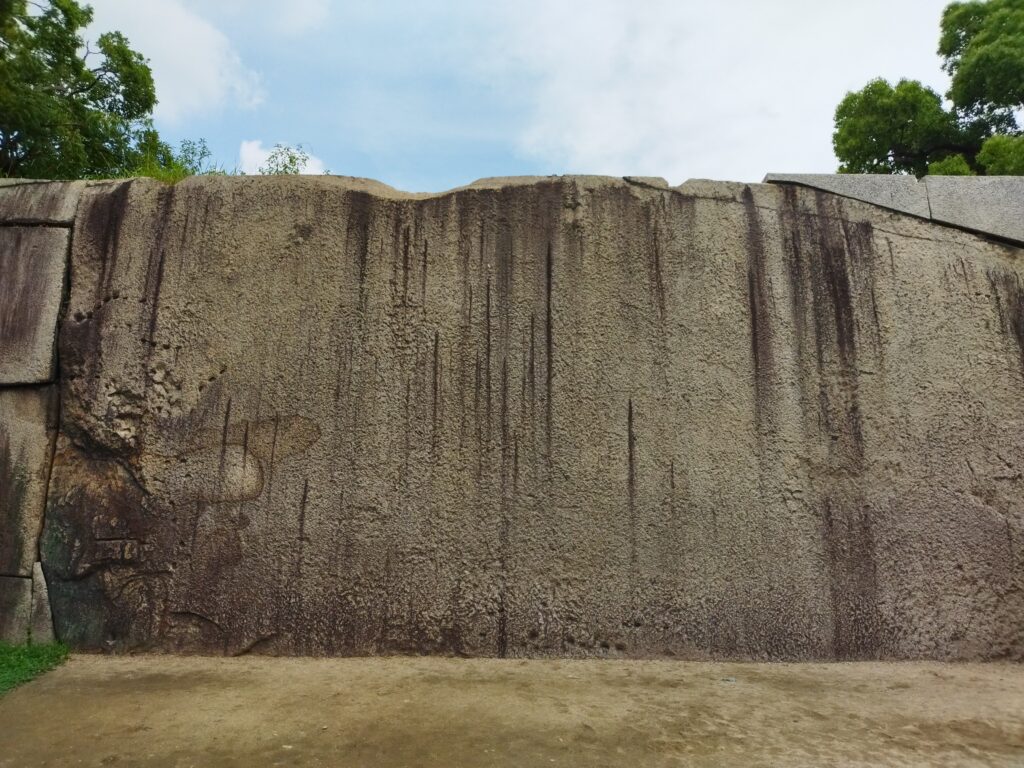
5.1 Basic Information
Stone walls have existed in civilizations across the world since ancient times, but here, we focus on what makes Japanese castle walls unique.
To keep this section accessible, we’ve omitted the intricate details that castle enthusiasts may already know. For foreign visitors passionate about stone walls, we’ll provide more in-depth insights in later editions.
- Japanese stone walls are built only with stones, unlike Western ones that use mortar and plaster.
- In Japan, due to the abundance of wood, stone walls have been commonly used as the foundation of buildings, unlike Western houses.
- The stone walls of famous castles today are unique structures that rapidly developed during the Warring States period.
- You can see various types of stone walls, ranging from simple ones made of natural stones to artistically crafted ones made of cut stones.
- Similar to the keep and castle gates, these stone walls were intended not only for defense and attack but also to intimidate the opponent with their wealth and dignity.
His voice rolls in like mist across the moors—cool, timeworn, and steady, like a Welsh stone wall tracing the horizon of a lonely plain?
5.2 Q&A 👀 Perspectives from Foreign Visitors
Looking up at stone walls is fascinating, but touching them often sparks an even deeper curiosity! Many visitors instinctively compare Japanese castle walls to those from other cultures, such as the Inca Empire.
Here are some common questions visitors tend to ask—because every stone carries a story worth exploring.
- How did they manage to move such huge stones?
- They spent a lot of time building ships and making roads to move the stones around.
- How did they stack those massive stones?
- Basically, they placed the largest stones at the bottom and stacked the other stones on top of each other in order.
- How did they cut out so many stones?
- They stuck iron wedges into the cracks they made in the stones and hammered them to split the stones apart.
- Why did they choose to use such big stones?
- To show off how great the lord was who undertook the construction of the stone walls, there was a competition based on the size of the stones.
- How tall is the stone wall?
- The biggest ones were like 100-foot-tall buildings, about as high as 10-story mansions.
- How long ago was it built?
- Unlike the wooden buildings that were prone to fire damage, many of the stone walls remain as they were when the castle was built.
- Why doesn’t it fall apart? Is it earthquake-proof?
- By stacking the stones at the corners of the stone walls alternately, the strength was enhanced, making them more resistant to earthquakes.
- What type of stones have been used in Japanese stone walls?
- They commonly used “granite,” a tough and weather-resistant stone that was also easy to work with.
- Where were the stones for the stone wall brought from?
- They carefully chose high-quality stones from different parts of the country for their brand value.
- How did they achieve such a smooth surface without any gaps?
- It was a time when lords had more free time, which allowed for significant improvements in stone processing technology.
A Q&A showdown featuring a U.S. Female Speaker (Q1–10), a U.K. Male Speaker (A1–5), and a U.K. Female Speaker (A6–10)—their rapid-fire exchange rocks like a Rolling Stones fan concert, packed with riffs of history, sparks of banter, and electric energy!
5.3 Ready to Crack a Smile? Short Stories for You!
Here are short stories exploring curious questions about Japanese castle stone walls. Will they help you break through the stacked-up mysteries like the towering walls in front of you?
Q1: How Did They Build These Walls Without Trucks or Heavy Machinery?
- It seems that everything was sourced locally in the beginning, as it was a labor-intensive age.
- Even the biggest castles in Japan at that time were constructed by gathering materials from nearby areas.
- They brought in any usable stones they could find, from tombstones in temples to foundation stones from neighboring ancient palaces.
- They particularly valued high-quality granite tombstones.
- But I wonder if they didn’t worry about curses or bad luck when using tombstones as the foundation for castles?
- We can understand that when the lord gave orders, there was no choice but to follow without thinking about the consequences.
- However, many lords and their families eventually met their downfall along with their castles.
- Maybe it was because they used tombstones as foundation stones showing no respect.
- Ironically, they may have dug their own grave by digging other people’s tombstones.
- That’s why most guides steer clear of this grave topic—they don’t want to dig their own grave by being misunderstood as raising grave(serious) issues.
U.S. Female Speaker — Her voice carries a somber, uneasy weight, reflecting the grim unease of using tombstones taken from other graveyards. The air is heavy with quiet judgment… and just a whisper of dread.
U.S. Male Speaker — While the tone is playful, his voice can’t quite shake a gravely serious undertone, as if even joking about tombstones feels like tiptoeing through a haunted cemetery in flip-flops.
6. Moat
6.1 Basic Information
Moats surrounding Japanese castles are not merely defensive structures—they embody history, cultural sensibility, and aesthetic values, making them truly captivating. While moats can also be found in Western castles, Japanese examples offer distinctive features. Below are ten key points, highlighting what makes Japan’s moats especially unique:
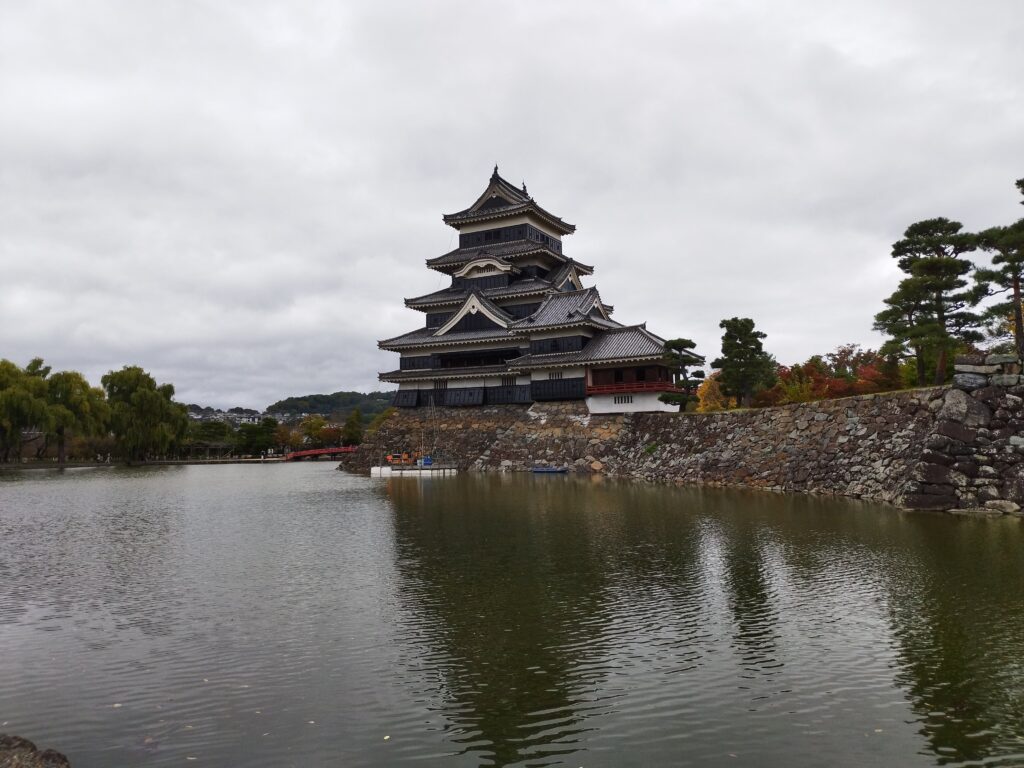
- Moats, the most important defensive lines for protecting castles from enemies, are mainly divided into two types: moats filled with water (water moats) and deep moats without water (dry moats).
- Moats were not simply ditches, but were designed to hinder the advance of enemies through various ingenious methods, such as creating ridges at the bottom of the moat (une-bori) or dividing them into a complex, maze-like pattern (shōji-bori).
- The moats were skillfully constructed using natural terrain such as mountains, rivers, marshes, and sometimes even the sea, so that the ruggedness of the natural environment served as a defensive barrier.
- The moat was sourced not only by rainwater and spring water, but also by water drawn from distant upstream rivers and directly from the sea, utilizing the advanced engineering techniques of the time.
- Moats were not only built for physical defense, but also to be large, wide, and deep, as symbols of the castle lord’s wealth and power with the intention of discouraging potential enemies from attacking.
- Many flatland or flatland-mountain castles had multiple inner and outer moats, forming a tiered defense system designed to prevent enemy intrusion and slow down attacks.
- Moats were generally several meters deep, and some are over 10 meters deep and dozens of meters wide, making them formidable and difficult for potential enemies to fathom.
- Many moats have been filled in or silted up over time, so they don’t have the same depth as when the castle was first built, making their original depths often unfathomable to modern people as well.
- The moat not only prevented enemy invasion, but also served as a route for the movement of residents within the castle, a transportation route for supplies, and an evacuation route in case of emergency.
- In modern times, many moats have been filled in as they were considered unsanitary or obstructive, but some have been converted into roads or used for sightseeing purposes by small pleasure boats in parks.
6.2 Q&A 👀 Perspectives from Foreign Visitors
Foreign visitors often express a wide range of reactions when they first see castle moats. Here are some common questions and insights they share:
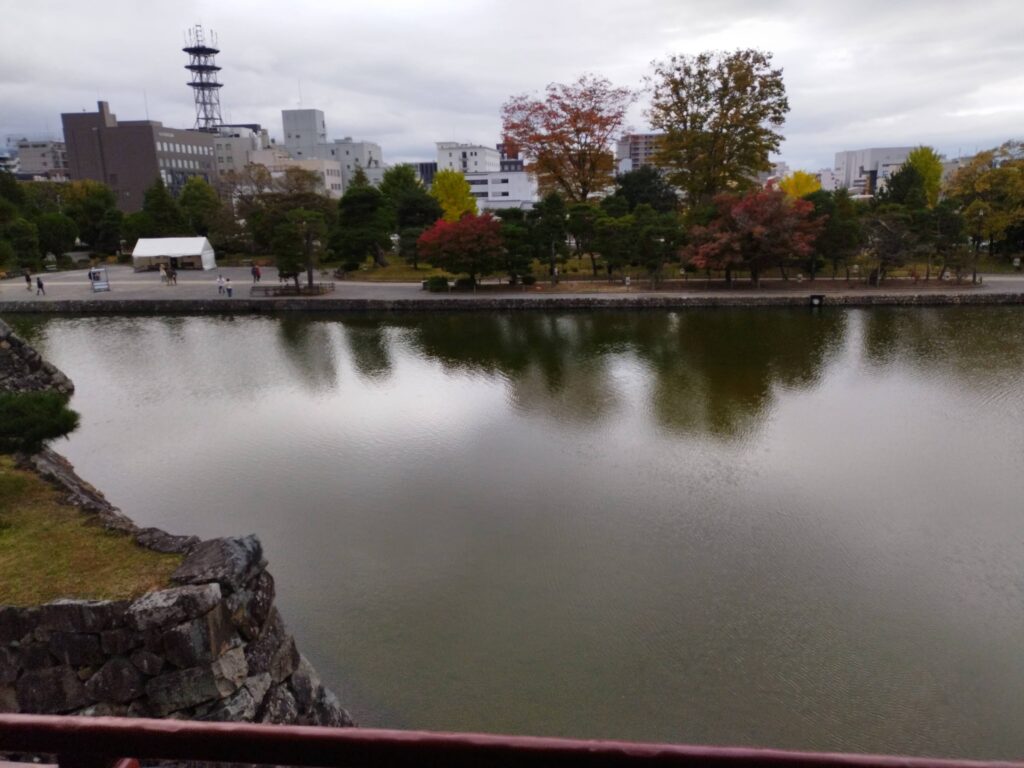
- “Where does all this water come from?
- “The water for castle moats comes from various sources depending on the castle’s location. Some moats use rainwater or natural springs, while others are fed by canals that bring water from distant rivers. “
- “Does the moat ever freeze in winter?”
- “Yes, in colder regions, moats can indeed freeze over in winter. This could potentially make it easier for enemies to cross. Because of this, it’s said that security guards would keep watch when the ice was thick enough to walk on.”
- “How deep is this moat, really?”
- “The depth of castle moats varies greatly, but they are generally several meters deep, with some exceeding ten meters. Combined with their width, this made them very difficult obstacles for attackers.”
- “Did anyone ever try to cross this moat to attack the castle?”
- “Absolutely, fierce battles were often fought right around the moats of many castles. There are numerous historical accounts of soldiers attempting to fill the moats with dirt and debris or trying to force their way across them.”
- “Why are some of these moats so incredibly wide?”
- “Wide moats served multiple purposes beyond just defense. They were also built to intimidate enemies by making the castle appear incredibly difficult to attack, thereby showcasing the lord’s immense power and resources.”
- “Why are so many moats in this one castle?”
- “Many castles featured multiple layers of moats (inner and outer moats) to create a tiered defense system. This not only protected the lord and his family at the castle’s core but also provided a defense for the vassals and citizens living in the surrounding areas.”
- “I heard there are dry ditches, without water. Why?”
- “You’re right! Dry moats (karabori) were often used in mountain castles because it was difficult to secure enough water there. These weren’t just simple ditches; they often had a complex, maze-like structure at the bottom to slow down and confuse any invaders.”
- “Doesn’t anyone sometimes fall into the moat?”
- “Unfortunately, yes, accidents do happen. Especially at night, there are numerous cases of people walking around the moat, perhaps while intoxicated, losing their footing, and falling in.
- “What kind of animals or fish live in these moats now?”
- “Today, many moats are home to diverse wildlife. You can often spot fish like carp and crucian carp, as well as various water birds such as ducks and kingfishers. They form a valuable waterfront ecosystem right here in the city!”
- “How are Japanese castle moats different from those in European castles?”
- “While both served defensive purposes, Japanese castle moats often had more complex designs at the bottom, like ridges and maze-like patterns. Also, they were intricately combined with towering stone walls for both strong defense and remarkable aesthetic beauty.”
6.3 Ready to Crack a Smile? Short Stories for You!
Q1 “Why are many moats open without fences?”
This question popped up earlier, but here we dive deeper—because modern moats face their own quirky challenges. Case in point: the late-night stumble of a tipsy tourist. Or the distracted step of someone too absorbed in their smartphone to notice the edge.
- Originally, castle moats marked the sacred divide between commoners and the elite.
- Their dangerous openness signaled, quite literally, “Do not cross this line.”
- Today, most moats remain unfenced—either preserved in their original glory or beautifully restored.
- Castles are tourist magnets, and no one wants a safety railing photobombing their perfect Instagram moment.
- But that openness invites not just selfies but, tragically, the occasional tumble—especially by intoxicated visitors.
- We want to avoid putting up warning signs in front of national treasures.
- Of course, it’s impossible to fill in the moat, like in medieval warfare.
- The only measure is to post small, discreet signs—but many visitors, absorbed in the scenery, fail to notice them.
- In the end, it might resemble a “sitting on the fence” situation.
- Except… there’s no actual fence to sit on, as we’ve already discussed.
7. Roof
7.1 Basic Information
The roofs of Japanese castles do more than shelter—they proclaim status, summon beauty, and embody meticulous craftsmanship. These aerial ornaments, soaring above stone foundations, speak of a time when every ridge and angle carried meaning. Let’s uncover 10 key elements behind their enduring charm:

- The roof of a castle is designed not only to protect against rain and wind, but also to assert the lord’s power and authority by standing out prominently from a distance.
- The roofs of the castle tower and turrets are designed to look more beautiful and three-dimensional through the combination of multiple roof styles.
- There are two main types of roof style: Kirizuma-zukuri, a gabled roof with a triangular surface resembling an open book, and Yosemune-zukuri, a hipped roof with slopes on all four sides (sometimes described as pyramid-shaped).
- Many castle towers feature an irimoya-zukuri roof structure, with a gabled roof at the top (sloping in two directions) and a hipped roof at the bottom (sloping in four directions).
- Many castles feature hafu (gables), which are the triangular decorative elements at the ends of the roof ridges. Among these are Karahafu (Chinese-style gables), known for their distinctive curved roofs.
- Many castles incorporate chidori hafu, which are smaller, often multiple gables placed on the main roof slope for air circulation and decoration. One theory says their arrangement can sometimes evoke the image of many birds flapping their wings in flight.
- At the ends of the roof ridges, decorative tiles shaped like faces, known as oni-gawara (demon-face roof tiles), are placed. They are believed to ward off evil spirits and fire, with their designs varying from castle to castle.
- At the peak of the castle tower roof, you’ll find imaginary creatures called ‘shachihoko’. These beings, with the body of a fish and the face of a tiger, serve as guardian deities against fire.
- Most roof tiles, made from soil or clay baked at high temperatures, are highly fire-resistant and durable, having been used for centuries.
- To achieve a beautiful and distinctively white appearance for the entire roof, some castles also used lead tiles, where the wooden roof structure was covered with sheets of lead.

7.2 Q&A 👀 Perspectives from Foreign Visitors
The castle roof is not only visible from the outside, but also from inside the castle, and its meaning, structure, and materials are often discussed casually, so this answer is quite long, taking those factors into consideration.

- Q: What is this roof made of?
- A: It’s mainly made of “kawara,” a type of tile baked from clay. Beneath these tiles, a wooden framework is carefully assembled to support the entire roof structure.
- Q: How heavy are the roof tiles?
- A: Each individual tile weighs a few kilograms, but when you consider the entire roof, the total weight can be several tons! This significant weight helps stabilize the roof, making it very resistant to strong winds.
- Q: Why are so many tiles used on the roof?
- A: Stacking so many tiles creates an effective layering system. This design efficiently drains rainwater away, preventing any water from entering the building. Plus, the thickness of these layered tiles significantly improves the building’s thermal insulation and offers protection against fire.
- Q: Are each of these tiles handmade?
- A: Historically, every single tile used on the castle was meticulously crafted by skilled artisans. Even today, for restoration projects, many tiles are still handmade using these traditional methods, which truly requires a high level of skill and craftsmanship.
- Q: What are those demon-face-like figures at the end of the roof?
- A: Those are called “oni-gawara” (demon-face roof tiles). They’re considered guardian deities that protect the castle roof. They’re believed to ward off evil spirits and fire. The cool thing is, their expressions and designs vary from castle to castle, so you can really appreciate the unique artistic differences!
- Q: What are those golden fish-like figures [shachihoko] on the roof?
- A: That’s a “shachihoko,” a mythical creature often seen on castle roofs. It’s said to have the body of a fish and the face of a tiger. They’re believed to extinguish fires by spouting water from their mouths, so they act as powerful fire prevention talismans. While some had gold leaf to symbolize power and wealth, they were unfortunately sometimes stolen due to their value.
- Q: The roof shape is very complex; does it have any special meaning?
- A: Absolutely! The complex roof shapes not only emphasize the castle’s dignity and beauty but are also designed with practical considerations like efficient rainwater drainage.
- Q: How long does this type of roof last?
- A: Clay tiles are incredibly durable. With proper maintenance, it’s not uncommon for them to last well over 100 years. In fact, many castle roofs have retained their impressive appearance for centuries!
- Q: Do they break when they fall, considering the material?
- A: Yes. As roof tiles are made from the same material as ceramics, they can certainly crack or break when dropped or subjected to a strong force. However, roof tiles are fixed independently and designed to overlap slightly with each other. This prevents the entire roof structure from breaking all at once, making them quite resilient when properly laid.
- Q: Is it safe even during an earthquake?
- A: While heavy tile roofs might seem vulnerable to earthquake shaking, traditional Japanese wooden buildings, like castles, have a flexible structure specifically designed to absorb and withstand seismic forces. They’re built to flex, not break.
7.3 Ready to Crack a Smile? Short Stories for You!
Q1 “ Are all the roofs of the castle made of tiles?”
This question often leads to some fascinating—and occasionally humorous—stories, especially involving Edo Castle and the present-day Imperial Palace. This section consists of two parts:(1–6) Basic explanation, followed by (7–15) a more lighthearted exploration.


- Most roofs are covered with roof tiles, but Edo Castle—where the shogunate lived and which later became the current Imperial Palace—used lead tiles.
- Lead turns white after long exposure to rain and sunlight, and depending on the weather, it can look as if snow has accumulated on the roof.
- Historical documents from that time describe it as beautiful and shining white, but it was so expensive that it wasn’t used on other castles.
- Kanazawa Castle was the only other castle that also used lead tiles, and there’s a theory these were intended to be melted down for bullets in times of emergency.
- The wealthy lords of Kanazawa Castle, second only to the shogunate in power, were constantly under suspicion of rebellion.
- And it’s true they were secretly preparing for a potential war with the shogunate.
- However, upon reflection, this theory is not realistic.
- In an emergency, there would be no time to melt lead tiles and make bullets.
- Even if prepared in advance, removing the lead tiles would leave the roof with just its wooden framework, severely compromising the castle’s basic defensive capabilities.
- However, it may have served to instill a sense of preparedness and resolve in the soldiers and commoners of the castle town in times of crisis.
- Sadly, during Japan’s last major wars, the people were tragically forced by the government to prepare to fight with mere bamboo spears.
- In contrast, the idea of preparing with lead tiles offered a sense of preparedness that was more aligned with traditional Japanese aesthetic values and ingenuity.
- At that time, geisha all over Japan used dangerous white powder containing lead just to make themselves look white and beautiful.
- Perhaps, the sheer presence of so many lead tiles, representing such immense cost and unique readiness, might have instilled a deeper sense of security and confidence among the castle’s inhabitants and the people of the castle town!
- You might say… confidence led to lead. Literally!
8. Goten
8.1 Basic Information
Not every Japanese castle has a goten, but these magnificent mansions offer a fascinating look into the lives of Japan’s most powerful feudal lords. They are more than just a side attraction for castle enthusiasts—they are a chance to dive deep into history. We invite you to explore the first 10 basic points to begin your journey.
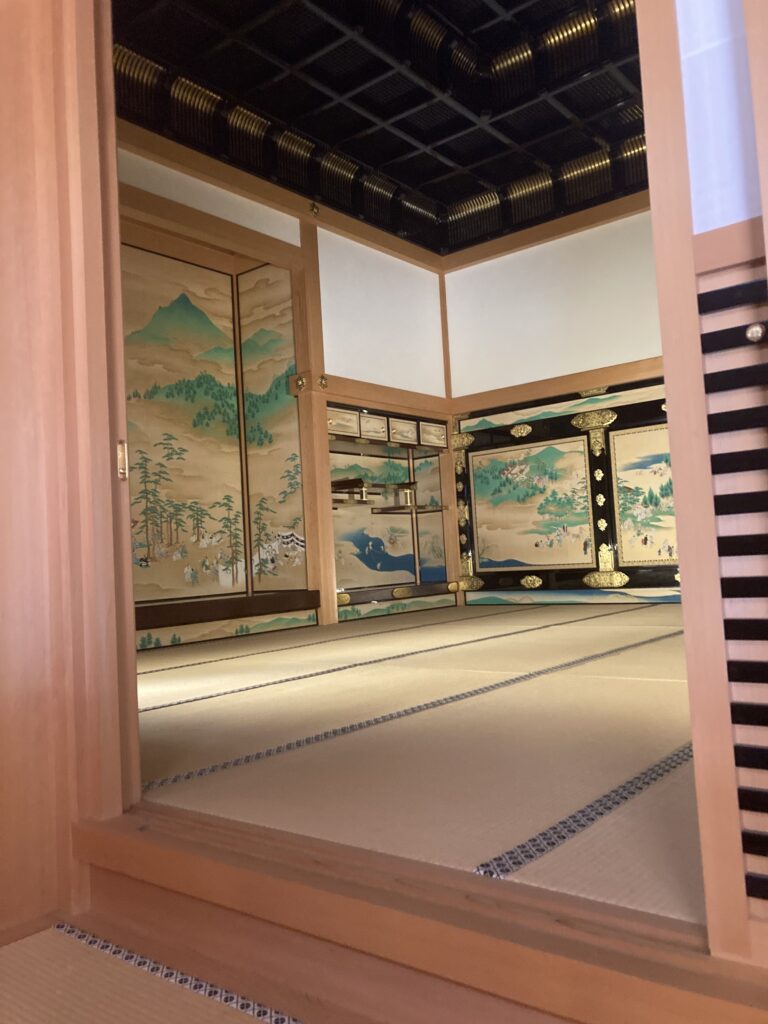
- Japanese castles shifted from being solely military facilities centered around the tenshukaku (main tower) during the Warring States period to peaceful centers of administration and daily life focused on the goten, a large traditional mansion.
- The goten was built within the castle grounds as the main residence for the feudal lord (daimyo) and their family. Its lavish and magnificent style demonstrated their authority and wealth.
- The goten was also a crucial site for important ceremonies. It featured many large halls to welcome the shogun and other high-ranking samurai.
- As the highest form of samurai residence, the goten was based on the elegant shoin architectural style. It featured a grand appearance with elements like coffered ceilings added to suit the lord’s taste.
- The sliding doors (fusuma) and walls were decorated with opulent paintings of tigers and pine trees, symbolizing the shogun’s or lord’s power. These were often intended to impress and even intimidate guests.
- The goten was a massive, multi-functional building. It included entertaining areas like a Noh drama stage, offices for officials and vassals, and living areas for consorts and sometimes even concubines.
- After the end of the samurai era, many goten were lost due to fire or demolition by the new government and military. Today, only a few original structures remain, such as those in Kyoto and Kanazawa.
- The majority of goten visitors see today are faithful restorations based on ancient documents and historical drawings. They preserve the appearance and atmosphere of the original buildings.
- Within the goten, the lord and their family lived comfortable, cultured lives, enjoying activities like Noh drama, the tea ceremony, and composing waka poetry, much like modern people.
- A key role for shoguns and feudal lords was to produce as many heirs as possible, so the area designated for consorts was a vital part of the goten.
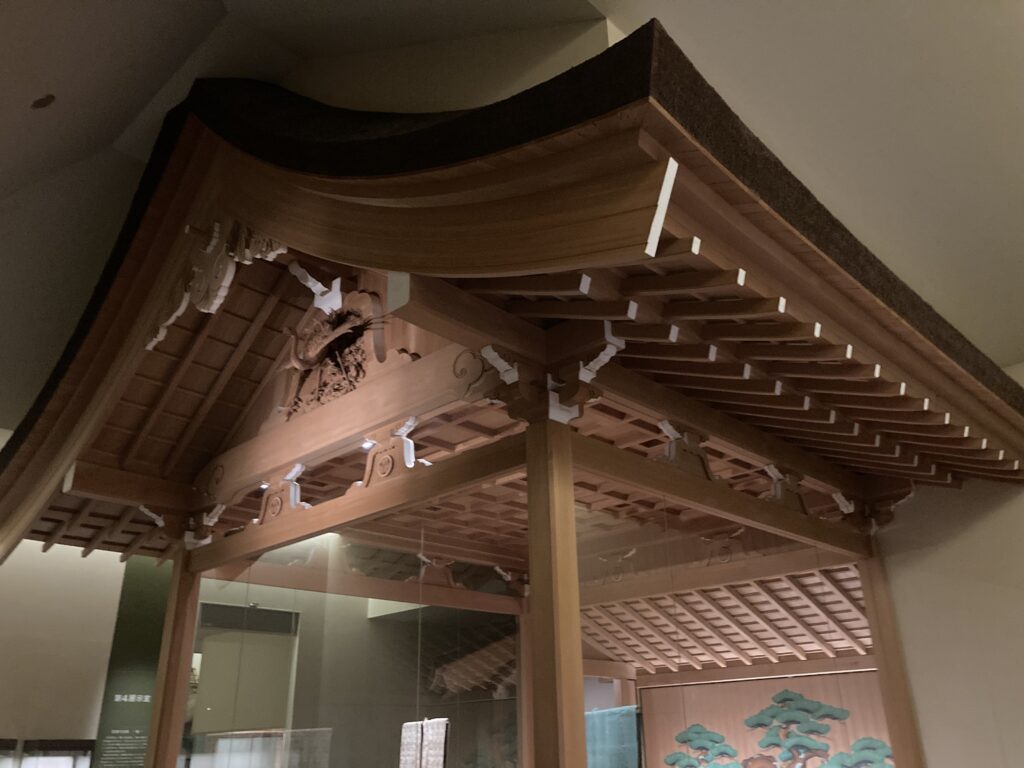
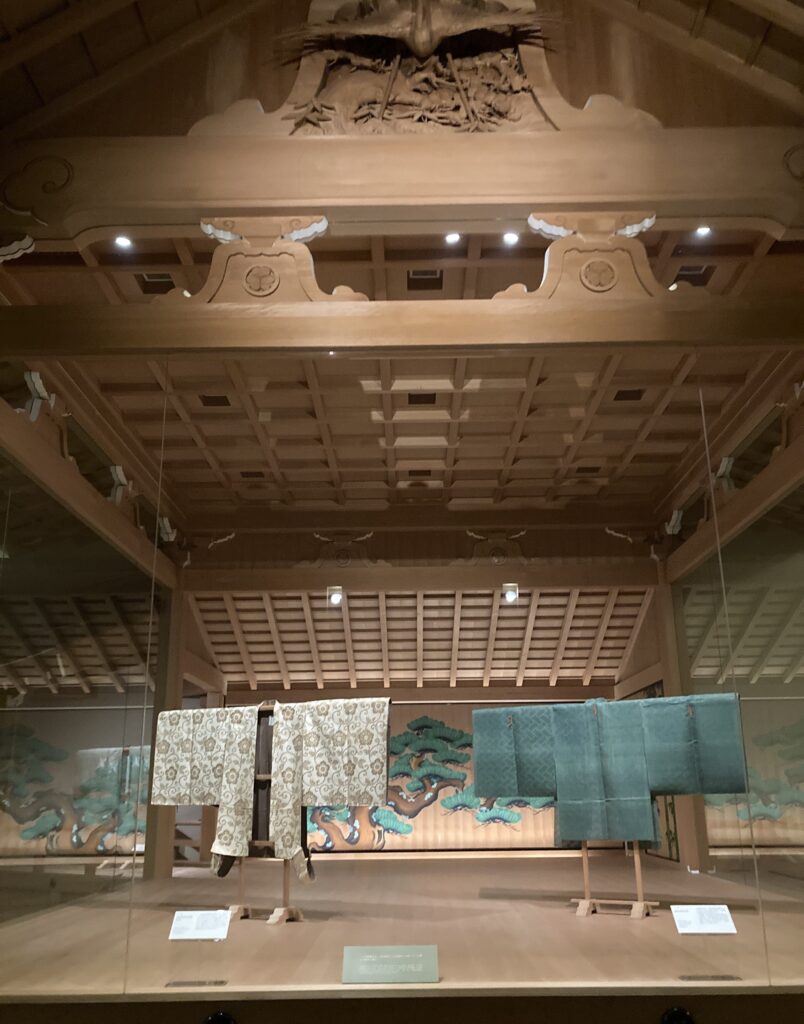
8.2 Q&A 👀 Perspectives from Foreign Visitors
Based on frequently asked questions we get while touring the goten’s interior architecture and exhibits, we’ve put together this Q&A session. If you have the chance to visit us in person, please feel free to ask your local guides for even more details.
- Q1: Where in the castle is the Goten located?
- A: The goten was typically built in the most important part of the castle, near the tenshukaku (main tower) or in a vast, open area at the center of the castle grounds.
- Q2: What is the difference between the tenshukaku and the goten?
- A: The tenshukaku was a military facility built for combat, with a focus on defense and observation. In contrast, the goten was the main living space for the lord and his family, as well as the center for political and ceremonial functions.
- Q3: What’s so interesting about the goten?
- A: The goten allows you to see the luxurious lifestyle of the lords through its art and architecture. The stunning rooms, filled with golden decorations, artistic paintings, and three-dimensional carvings by prominent artisans, are so impressive that visitors can easily lose track of time.
- Q4: Do all castles have a goten?
- A: Yes, most castles had a residential building for the lord. Unfortunately, most were lost after Japan’s modernization, but many have been faithfully restored based on historical records.
- Q5: If it’s a complete restoration, is there no risk of fire?
- A: As you pointed out, many fires in the past were caused by lightning strikes or carelessness. While traditional materials and methods are used, restored goten now incorporate the latest fire prevention systems and lightning rods for safety.

- Q6: What kind of historical materials are used for restoration?
- A: For restoration, primary clues come from historical documents like original blueprints, drawings, and design sketches. Additionally, fragments of excavated building materials, ornaments, and craftwork are also used as important evidence.
- Q7: Why is the goten a low-story building?
- A: With so much available land, there was no need to build with multiple stories. The low-story design enhanced its integration with the adjacent gardens, allowing every room to have a beautiful view.
- Q8: How many rooms did the goten have?
- A: The scale varied greatly depending on the feudal lord’s power and wealth. The goten of Edo Castle, belonging to the shogun, had over 100 rooms, while wealthy provincial lords often had mansions that were more than half that size.
- Q9: Were the gotens free from the strict castle building restrictions from the shogunate?
- A: No. As part of the castle, the scale and style of the goten required prior approval from the shogunate.
- Q10: How long does it take and how much does it cost to restore a goten?
- A: The time and cost depend on the materials and the luxuriousness of the interiors, but it’s said to take 5 to 20 years and cost tens of millions of dollars. This is because the restoration aims to precisely recreate the original structure while preserving traditional Japanese building techniques.
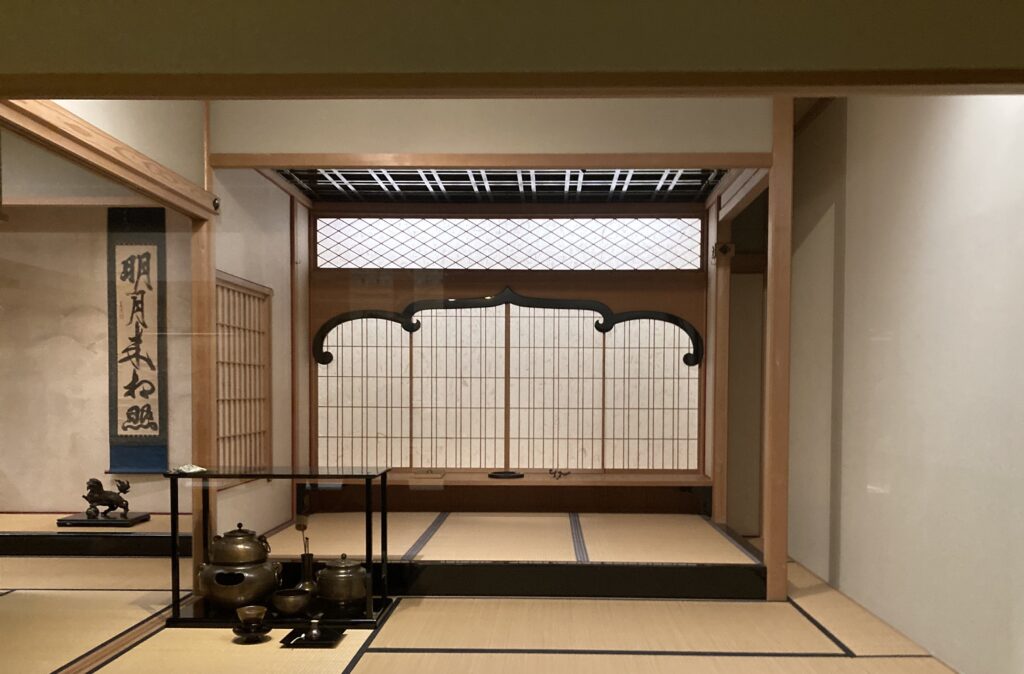
8.3 Ready to Crack a Smile? Short Stories for You!
Q1 “ Why is photography prohibited in many castle’s mansions?”
While photo restrictions are a common rule at tourist spots, the reasons for them can vary slightly depending on the location. Although we local guides rarely get asked why, I’ve noticed some of you might be wondering. So, I’ve woven in the reasons behind Japan’s photo rules and turned it into my usual humorous take. This section has two parts: a basic explanation (1–6), followed by a more lighthearted exploration (7–14).

- The primary reason is the protection of cultural assets.
- Flash photography can cause the paintings on sliding doors and partitions to deteriorate.
- Photography is also prohibited to prevent visitors from becoming too absorbed in taking pictures, which can lead to falls and congestion.
- The sound of the shutter can disrupt the atmosphere of the place, detracting from the historical experience of others.
- It’s also necessary to protect the copyrights of contemporary artists whose works are included in the restored pieces and exhibits.
- That is all true, and it’s no different from many modern museums, so I have no objection to any of those rules.
- However, after guiding many guests through these mansions (goten), I’ve realized that the experience is a little different from that of a museum.
- If a visitor takes a photo, they’ll be asked to apologize and delete the data on the spot.
- This is also a failure on the part of the guide to provide a proper explanation, so the guide can be blamed.
- But the level of responsibility I feel is much heavier in a mansion than in a museum.
- After all, within the goten, the relationship between the host and the visitor hasn’t changed at all since the samurai era.
- The shogun and local lords, who were the former owners of the goten, have simply been replaced by modern government and municipal tourism authorities.
- The mansion’s management staff are like samurai from the shogunate or lords, monitoring visitors and subtly pressuring them against the backdrop of powerful tiger paintings.
- And we local guides are like the same low-ranking warriors who guided their guests through the palace, with the same worries and tensions that have remained unchanged for hundreds of years, just to make sure our guests don’t misbehave!
9. Goten
9.1 Basic Information
- Japanese castle walls were a critical part of the defensive fortifications, featuring unique innovations not found in ordinary walls.
- The strength of the walls wasn’t just in their construction; their placement was also strategic. A great example is the tamon-yagura, a long turret that connects multiple sections of the wall.
- The walls also emphasized aesthetics, with the contrast of the white plaster and black tiles and the flowing curves of the stone foundations reflecting the Japanese sense of beauty.
- While the walls were designed for defense, they also allowed for counterattacks through numerous small holes called sama. Many of these were hidden or covered, making them invisible from the outside.
- The sama holes were designed to be narrow on the outside, making them difficult for attackers to target, while a funnel-like shape on the inside provided a wider field of vision for defenders.
- To further boost defense, ishi otoshi (stone drop-offs) were added. These overhangs allowed defenders to drop stones or boiling water on enemies directly below the walls.
- Despite its simple mechanism, this feature was highly effective and cost-efficient. It required almost no maintenance—defenders simply needed to drop objects—making it a common addition to most castles.
- Plaster was widely used for its fire and water-resistant properties, as well as for its aesthetic appeal, making the castles appear pristine and a symbol of power.
- Namako walls, a decorative style where raised plaster joints resemble a sea cucumber, were popular in castles but were also widely used on merchant houses and storehouses because of their high decorative value and durability.
- Unlike reinforced concrete, a modern material born from the need for strength, a castle wall’s construction—layered with local soil and plaster over a wood and bamboo frame—was a response to the availability of local resources and Japan’s humid climate.
9.2 Q&A 👀 Perspectives from Foreign Visitors
- What are the walls of the castle made of?
- Answer: The walls of Japanese castles were mainly built from natural materials like earth, wood, and plaster. They were generally constructed on top of stone foundations, using a framework of wood or bamboo, which was then layered with hardened earth and finished with a coat of plaster.
- Why are the walls of the castle white?
- Answer: The white walls are coated in plaster, which served a dual purpose. It protected the castle from fire and moisture, and its brilliant white color symbolized the owner’s power and authority.
- Why is there a black and white mesh design on the walls?
- Answer: While it looks like a beautiful pattern, it’s a highly functional design. This style, called namako wall, was created by combining black tiles and white plaster to increase the walls’ resistance to fire and water.
- What is the black and white design made of?
- Answer: The black parts are tiles, and the raised white areas are plaster. This style is called the namako wall because the raised plaster joints resemble a sea cucumber.
- Where were the wall materials sourced?
- Answer: Materials were primarily sourced locally. However, if high-quality soil or other specific materials were not available nearby, they were transported from distant mountains to ensure the wall’s durability and quality.
- (Looking at the exhibits) Why are there many layers in the cross section of the walls?
- Answer: The multi-layered structure was a clever defensive strategy. A framework of wood or bamboo was built inside, then covered with multiple layers of earth and plaster to increase the wall’s strength and durability. Some walls were even filled with layers of pebbles to stop bullets.
- Why aren’t the walls of Japanese castles made of fire-resistant stone?
- Answer: Sturdy but heavy stone walls were not suitable for earthquake-prone Japan because they were prone to collapse. The flexible, multi-layered design of Japanese castle walls, which used materials like plaster with some fire resistance, was a more effective solution.
- Are the walls of a castle the same as those of a regular Japanese house?
- Answer: They might look similar, but their construction is completely different. Castle walls were built for defense, so they are thicker and much stronger, with multiple layers of different materials to withstand attacks.
- Are the walls of a castle still the same as they were in those days?
- Answer: Even the walls of national treasure castles are not exactly as they were in the past. They require regular maintenance every few decades to prevent decay. Therefore, the walls you see today, whether in original or restored castles, are the result of continuous upkeep over many generations.
- Are castle walls earthquake resistant?
- Answer: Yes, they are. Japanese castle walls have a flexible, multi-layered structure combining different materials, which allows them to absorb and disperse seismic energy. This unique feature developed in Japan as a way to cope with frequent earthquakes, and it’s not typically seen in the stone castles of the West.
9.3 Ready to Crack a Smile? Short Stories for You!
Q1 “Can this sea cucumber wall be eaten?”
It may be hard for some to believe, but as a local guide, I’m often asked a very specific question when I’m explaining the fascinating history of a Japanese castle wall. This story was compiled based on questions I actually get, especially after I’ve just explained how delicious sea cucumbers are!
In this post, I’ve divided the story into two parts. The first half provides a solid, serious explanation that can be used for presentations and guided tours. The second half is a more lighthearted and playful take—perfect for breaking the ice and adding a bit of humor to your casual conversations.
- Unfortunately, this wall is not edible.
- As I explained earlier, the name comes entirely from its appearance.
- In this building method, flat tiles are laid side by side on the wall, and the gaps between them are filled with plaster in a raised, semicircular shape.
- The raised plaster resembles a sea cucumber, a mollusk that lives in the ocean, which is why the wall is commonly called “sea cucumber wall.”
- In Japan, sea cucumbers have been consumed as a delicacy since ancient times and are still popular today for their unique crunchy texture.
- In China, they have long been prized as a tonic and a luxury food for their purported health benefits.
- Because of this, powdered sea cucumber has become a popular health food sold online in recent years, and exports from Japan are on the rise.
- This means we local tour guides might have to be more careful when guiding foreign guests in the near future.
- Many people dislike eating sea cucumbers due to their grotesque, caterpillar-like shape and eerie color.
- I personally believe the first person to eat one must have been incredibly hungry!
- But as more people consume powdered sea cucumber for health reasons, many who have never seen a real one might mistake the powder for the actual thing.
- If these people see a white wall called a “sea cucumber wall” in a Japanese castle, they might mistakenly think it’s made of powdered sea cucumber.
- Do you remember that old, tragic story about the cat that was killed after its owner tried to dry it in a microwave?
- Since then, microwave manufacturers have been required to put a label on their products saying, “Do not dry cats in a microwave oven.”
- Maybe someday, our sea cucumber walls will be required to have a similar label that says:
- “This sea cucumber wall is not edible.
Thank you & Afterwards
🔶Thank you very much for reading to the end of this issue. If you have any comments or requests, please feel free to contact us at the Help Desk.🔶GOLD💎250618.v4a.v4a.v2a
